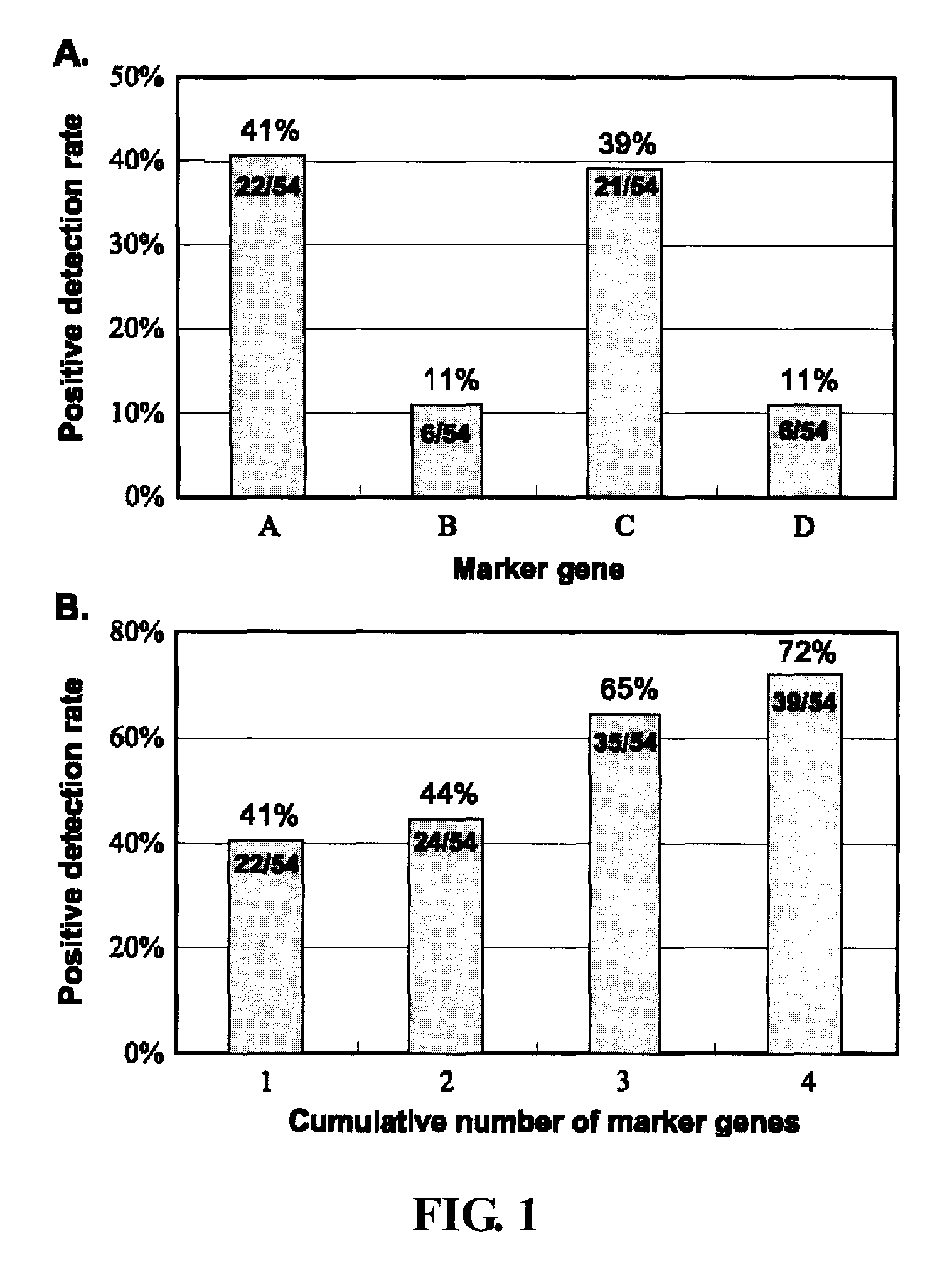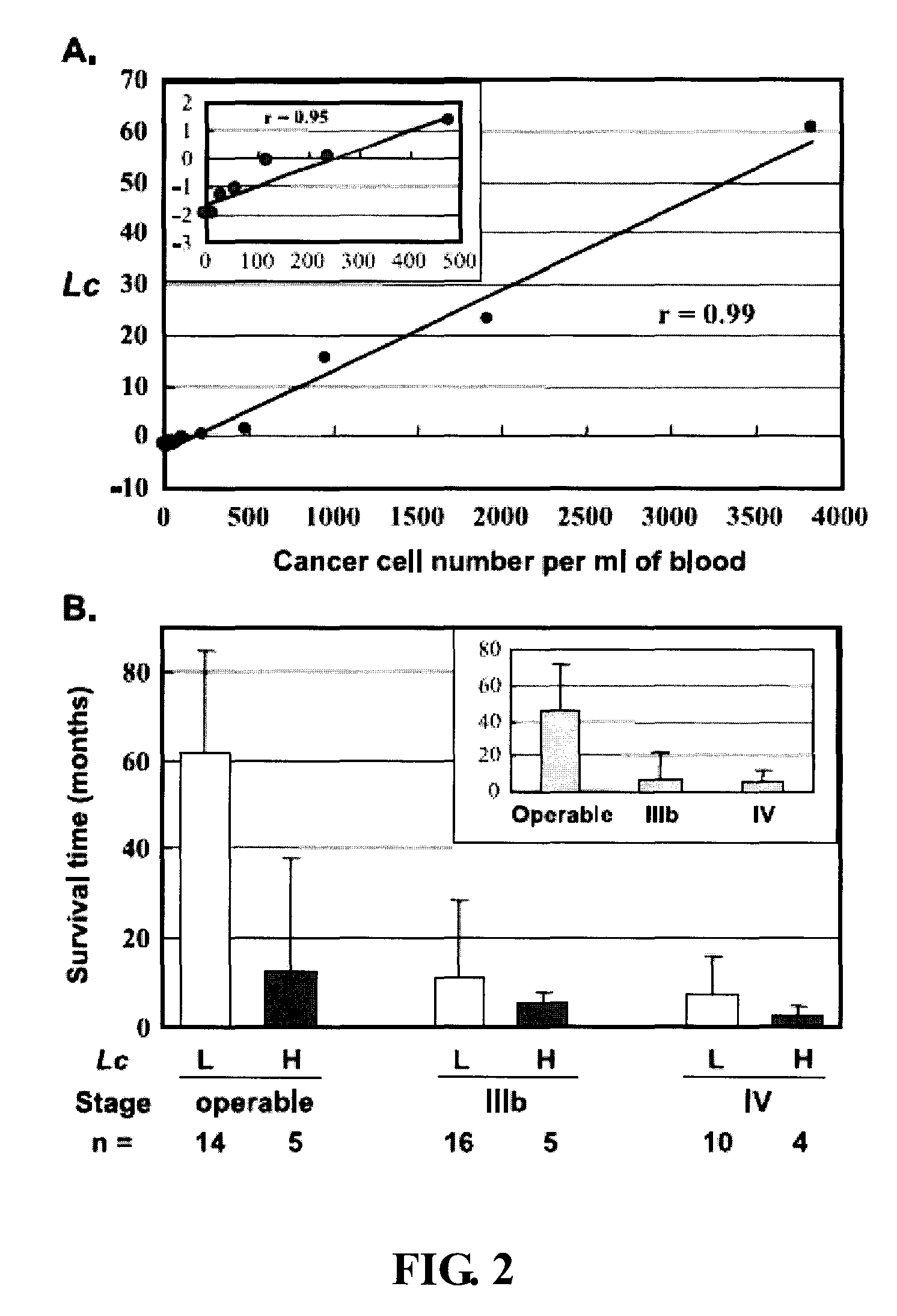Rapid efficacy assessment method for lung cancer therapy
a cancer therapy and efficacy assessment technology, applied in the direction of instruments, biochemistry apparatus and processes, material analysis, etc., can solve the problems of inability to accurately diagnose cancer, inability to detect disseminated tumor cells with the current imaging techniques, and inability to use serum protein markers for early diagnosis of lung cancer. to achieve the effect of rapid efficacy assessmen
- Summary
- Abstract
- Description
- Claims
- Application Information
AI Technical Summary
Benefits of technology
Problems solved by technology
Method used
Image
Examples
embodiment 1
[0058] Embodiment 1 Enhancement of positive detection rate with multiple marker genes.
[0059] As shown in FIG. 1A, the positive detection rate of circulating cancer cells in NSCLC patients was 41%, 11%, 39%, and 1% for genes A to D, respectively. The fractions of positives among all the patients are indicated in the columns.
[0060] Increasing the number of marker genes raised the positive detection rate for NSCLC patients to 72% (39 of 54) compared with 41% (22 of 54) positive detection rate using the CK19 marker gene alone (FIG. 1B). These results prove that using multiple markers indeed improves the positive detection rate. The B marker gene was not detected in squamous cell lung cancer patients, but the other three genes were detected in patients with adenocarcinoma or squamous carcinoma.
[0061] Embodiment 2 Circulating Cancer Cell Load and Patient Outcome
[0062] To investigate the correlation between the number of circulating cancer cells and patient outcome, the present inventio...
PUM
| Property | Measurement | Unit |
|---|---|---|
| Time | aaaaa | aaaaa |
| Heterogeneity | aaaaa | aaaaa |
| Nucleic acid sequence | aaaaa | aaaaa |
Abstract
Description
Claims
Application Information
 Login to View More
Login to View More - R&D
- Intellectual Property
- Life Sciences
- Materials
- Tech Scout
- Unparalleled Data Quality
- Higher Quality Content
- 60% Fewer Hallucinations
Browse by: Latest US Patents, China's latest patents, Technical Efficacy Thesaurus, Application Domain, Technology Topic, Popular Technical Reports.
© 2025 PatSnap. All rights reserved.Legal|Privacy policy|Modern Slavery Act Transparency Statement|Sitemap|About US| Contact US: help@patsnap.com



